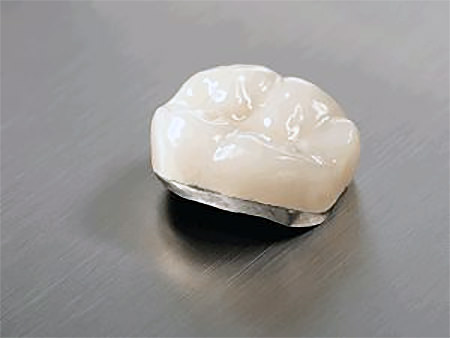
Porcelain-fused-to-metal restorations have been a mainstay of prosthetic dentistry for more than half a century. The flexibility in design from no exposed metal to metal occlusals allow the PFM to be utilized in many clinical situations including parafunction and limited space. PFMs work well as single units and bridges designed by your preferences for each case.
PFM

The PFM (Porcelain-Fused-to-Metal) crown is a tried-and-true restoration that provides strength and durability. The PFM could be the only option for those difficult and complex situations that require precision attachments or require high strength in situations with minimal room.
Benefits
Tried and true.
Strength and durability.
Good for large-span bridges.
Precision attachments.
Indications
Ideal restoration for anterior and posterior crowns and bridges. Cases requiring precision attachments or when minimal inner occlusal space is available.
Contraindications
Highly aesthetic cases with minimal prep reduction.
Cementation
Any resin modified glass ionomer luting agent.
Preparation
Any margin style, ideally 1.5 mm of inner occlusal space for optimum aesthetics.
Types of alloys
The metal substructure of a PFM can be made from any one of many dental alloys.
High noble – Precious. These alloys have over 60% gold, platinum and/or palladium content. High noble metal is one of the easiest alloys to adjust. Yellow gold high noble metal offers the best aesthetics over any other PFM restoration. We offer PFM crowns in both yellow and white gold high noble restorations.
Noble alloys – Semiprecious. These alloys have over 25% noble metal (gold, platinum, palladium) content. Noble metal crowns offer a more hypoallergenic restoration over base metal crowns at a more affordable cost over high noble crowns.
Base – Nonprecious. Contains less than 25% noble metal. Base metal alloys are the most economical PFM restoration. Many base metal alloys contain nickel, chrome, and/or beryllium alloys.

